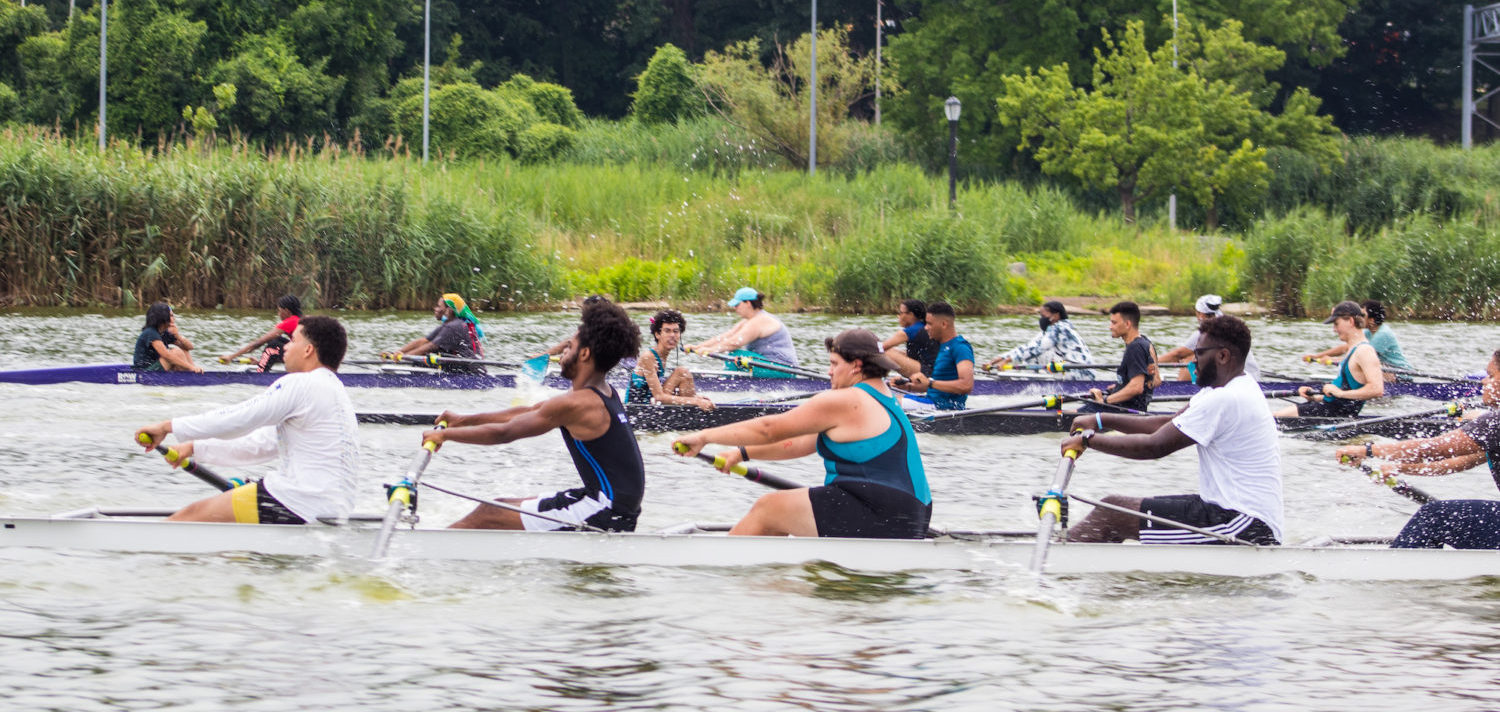My hope for the video is to evangelize a person with blindness integrated in mainstream events and employment.
-Patricia Walsh
We are happy to share an amazing story of a strong, powerful athlete, Patricia Walsh. She is a 5-time U.S. National Champion, 2012 USA Triathlon Athlete-of-the-Year, 3-time World Championship bronze medalist, 2016 Paralympian and world record holder for the fastest blind and low-vision long-distance triathlon. Her next plan is to conquer the sport of rowing at the 2020 Paralympic games. We have had the pleasure of rowing with her alongside our competitive masters program in the past. Patricia’s strength, determination and resilience is an inspiration to our adaptive rowing community, but as importantly, she serves as a model for all of our rowers regardless of ability.
From Garmin:
See Me First For My Ability
World record-holding Paralympian, engineer and competitive rower Patricia Walsh lives to serve as an example of life lived beyond perceived limitations. She won’t let blindness define her or put a ceiling on her lofty goals.
By Patricia Walsh
I spend no time wishing my life was different. At age 5, I lost vision in my right eye due to a brain tumor over my optic cortex. In my early teens, scarring from surgeries resulted in total blindness with only a small field of light perception in my left eye. I can’t see my hand at the end of my arm.
Growing up as a person with blindness, I was spoon-fed the idea that every decision had to be governed by my limitations. From school to sports, if it wasn’t accessible, I was made to believe it was not for me.
But a person who goes blind is still the same person they always were, and all my life I felt untapped potential. I was born ambitious. Staying inside where it is safe and sound was so limiting.
I wanted to step outside the safety to explore my own capability. I knew in order to tap any of my potential, I would have to learn to adapt to the world; the world was not going to adapt to me.
When I expressed interest in attending college, I was told it would be an exercise in failure. But I knew that higher education was the key to becoming self-reliant. So I bet on myself and enrolled at Oregon State University. Was it tough? Unbelievably. Did I receive special treatment? None. But beyond the degrees I earned, I learned a lot about myself and my capacity to overcome in those years.
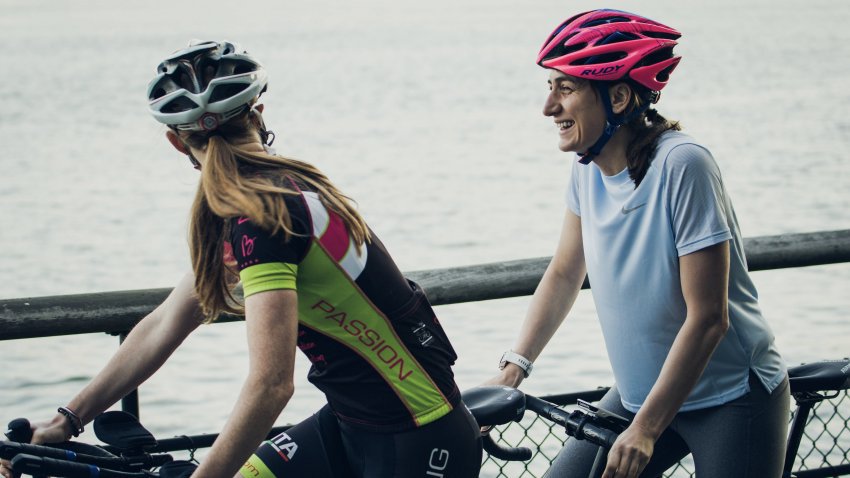
It was during college that I took up running. Learning to run undoubtedly changed my life. The first time I ran, I had no idea how to make it accessible. I found a trail near my house and ran with one foot on the concrete trail and the other on the gravel. I ran a mile successfully but had no plan how to get home, so I had to recruit help from another runner. The next day, I put a rock on the edge of the trail. I ran a half-mile one way, then a half-mile home. When I hit the rock, I fell. That is how I knew I was back home.
I later learned about guides. By tethering myself to a sighted person, I was eventually able to run 12 marathons, 2 long-distance triathlons, 2 ultramarathons, become a 5-time U.S. national champion, 2012 USA Triathlon athlete of the year, 3-time World Championship bronze medalist, 2016 Paralympian and world record-holder for fastest blind and low-vision long-distance triathlon.
Athletics changed the way I saw myself. For the first time, I had some fodder to believe in myself. I was not the blind girl anymore; I was a competitive athlete. When I was pushed out of my comfort zone, I could achieve so much more than I ever knew possible. I used to look at every decision and ask, “Is this accessible?” Nothing is made with me in mind, so the answer was always no. Ever since I ran that first mile, I look at every decision with the mindset that I may not know how I am going to do this, but I will find a way.
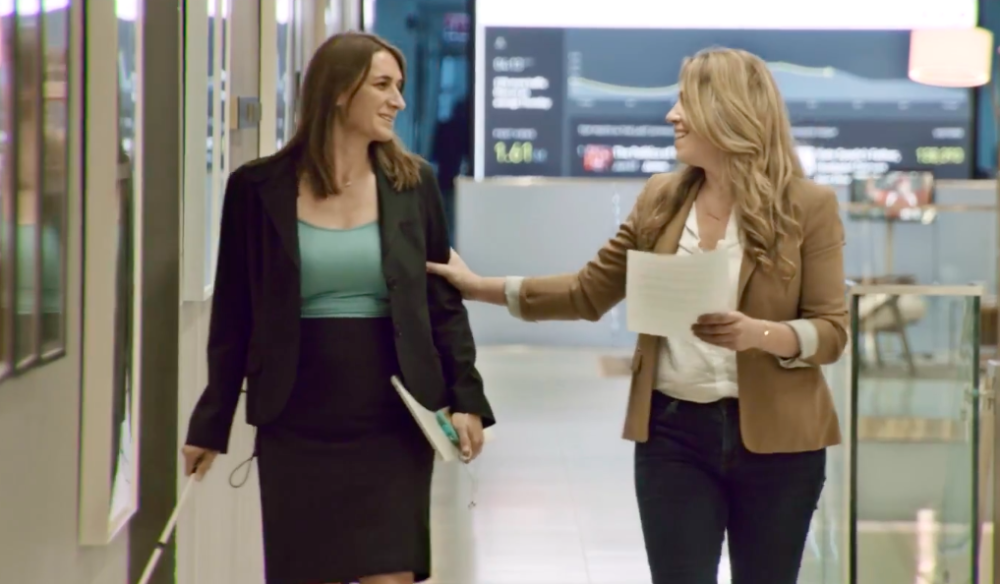
In 2006, I graduated from Oregon State with a degree in electrical engineering and computer science. I was employed immediately by Microsoft. I have since had a thriving career in engineering, currently as lead technical product manager for Dow Jones.
I am forever pushing to the next level in both my career and athletics. If I am not a little uncomfortable, then I am probably not pushing myself hard enough.
Over the past year, I’ve been transitioning from a runner and a triathlete to a rower. To start over in a new sport is humbling. I made it to national team selection camp as a long shot. To be a long shot feels like a failure, even if it’s truly a sign of success to be considered at all as a newcomer in this sport. It is in these moments I remind myself that I am here to grow as an athlete. Being uncomfortable means I am on track to become better. I cannot claim experience on the water where there is none. I can demonstrate improvement every day. I can be coachable. I can be a supportive teammate.
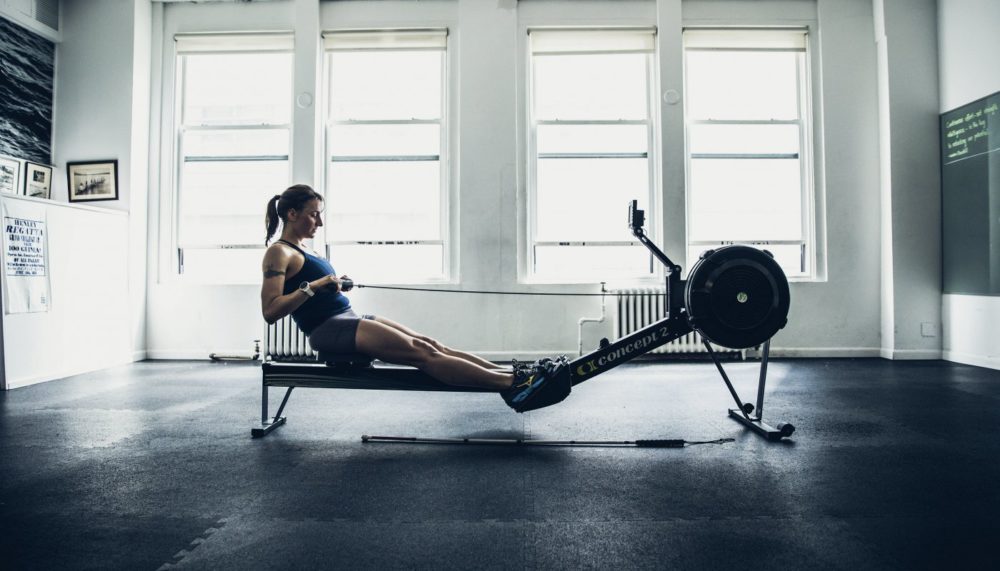
I remind myself why I am here. It is my hope to help others live a life beyond their perceived limitations. What’s my next big goal? I aim to represent the U.S. in the 2020 Paralympics, and I believe this is an opportunity to lift up others in the process.
I’d love to help each and every one of you achieve your own blind ambitions. Read more of my story in my book, “Blind Ambition: How to Envision Your Limitless Potential and Achieve the Success You Want.”
From Outside Online:
The Brilliant Vision of Patricia Walsh
As a Paralympic athlete and corporate executive, Walsh has been wildly successful. But her real goal is both more fundamental and more challenging: to change the perception of people with disabilities
It’s 2016, and triathlete Patricia Walsh is meeting Barack Obama at the White House, in a line of fellow athletes. He shakes her hand. And Walsh’s mind momentarily glitches: “I ask him if he wants to play basketball with me,” she says. Without skipping a beat, he answers, “You got any moves?” She spends the next two minutes explaining that she’s never actually played hoops; then has a crisis of confidence. “I was sitting in the White House, asking myself: ‘Am I intelligent or not?’” she says. Her next thought was, “Yes,” but directly after, “Are you sure? Is this something you’ve heard other people say?”
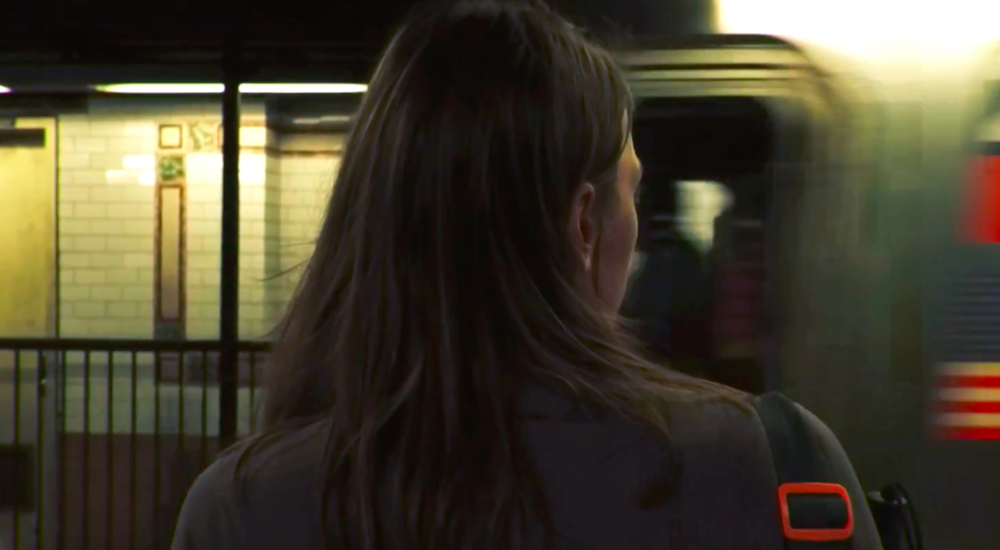
“By the way, that’s really out of character,” she adds. “I’m not one to lose my footing.”
Let’s get things straight: Walsh, 37, is plenty smart. At Dow Jones, in New York City, she leads a technology product management team. She’s also a wildly gifted athlete, which is why she was in the White House after the 2016 Summer Paralympics. Walsh had just taken seventh in the women’s triathlon. She’s a five-time USA Triathlon national champion, she’s won seven gold medals internationally, and she holds the world blind speed record, which she set at the 2011 Ironman Texas. Walsh is also a competitive marathoner and now a national-level rower. The only reason Paralympic champion Walsh couldn’t shoot hoops with the president…is because she’s blind.
From Sighted to Blind “in the Flash of an Eye”
At age five, Walsh’s Seattle doctors discovered a brain tumor. After six months in the hospital, she emerged with no tumor, but extremely limited vision. By age 14, though, residual scarring from the tumor had taken the rest of her sight. Ever since, she’s had a “very narrow field of slight visual impression,” meaning she can see a dot of light as if down a long, narrow tube, and she can tell whether the lights are turned on or off. In the parlance of the Paralympics, she has what’s known as “B1” vision—a classification that denotes that an athlete is totally or almost totally blind.
Her transition from able-bodied to disabled happened “in the flash of an eye,” she says. But because she couldn’t stand people feeling sorry for her, she worked on her social interaction skills and sat in a room with alarm clocks for 10 hours at a time, training herself to look directly at each clock when it rang. The hurdles kept coming. Before she was whisked away to a school for the blind in Ontario, Canada, she’d been the top of her class at sighted school. Now, attempting to learn braille, she could barely get through a children’s book. And with both family and society hammering the message that a blind person stood no chance of contributing anything meaningful to the world, her self-esteem was “abysmal.”
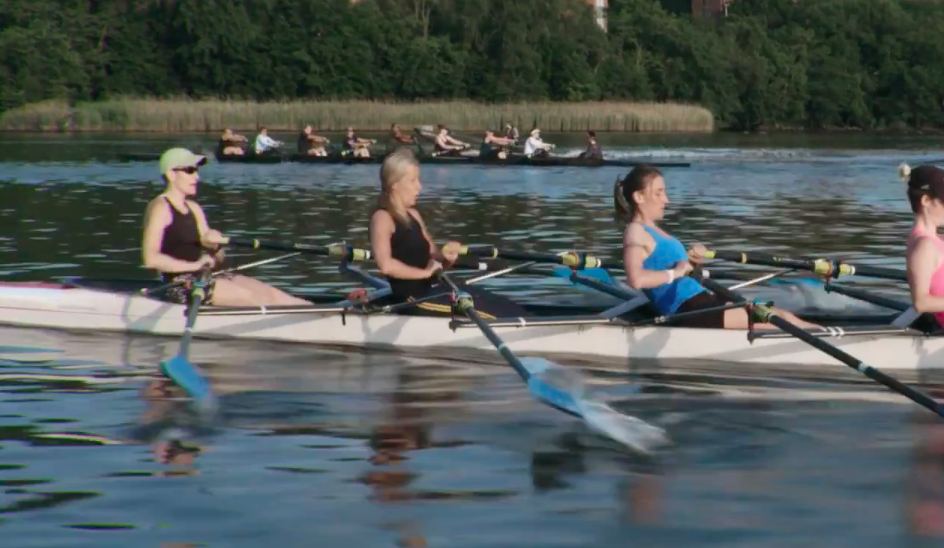
The only thing that kept her going was running track, which she did by feeling for the inside edge of the lane with her foot as she ran. As a senior, competing with both blind and sighted athletes, she qualified for Canadian provincial finals in the 100- and 200-meter dash—and won the 100 meters.
But by college, at Oregon State University, while Walsh was on an upswing mentally, she had let her athletic endeavors lapse. She was studying computer science and helping design systems to aid blind people in learning math and science, but she’d become sedentary and a smoker. And then one day her dad suffered multiple strokes and heart attacks, and shortly thereafter surgeons performed a quadruple bypass on her grandmother—and everything changed for Walsh.
“That lit a fire in me,” she says. “Blind or not, the system’s the same: Only you are accountable for building a better life for yourself.”
Running with People
Walsh is blind, remember, so she took up running again with a cane. Out the back door, a trail cut through the woods. She ran and fell, ran and fell, but she built from one mile to eight to a half marathon in six months. She ran her first eight marathons before learning about running guides who run alongside the blind. Before that, she just picked herself up. “People confuse the blind with the fragile,” she says. So much for that. In the Seattle Marathon in 2010, she placed in the top ten in her age group.
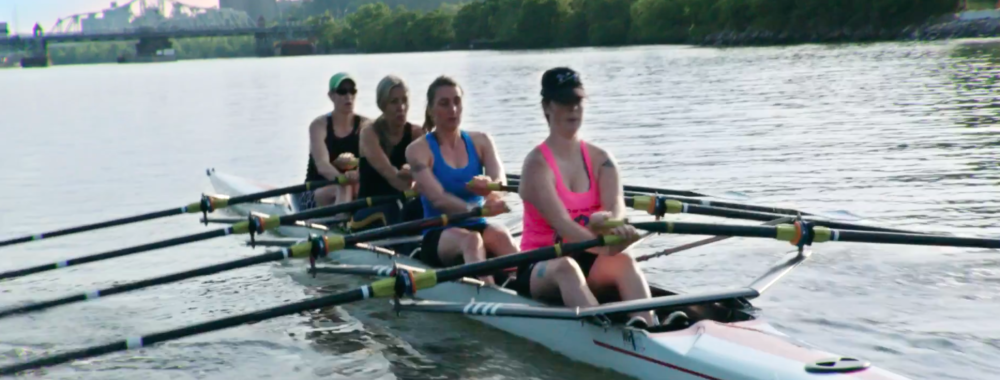
Several years later, hearing that she was getting bored with marathons, a friend in Seattle built her a bike. They spent a day riding all over Seattle and along the Puget Sound, stopping for dinner and drinks, and finally calling it a night at 4:00 a.m. “The bike was pure freedom,” says Walsh, “the freedom of not being so different.” It took virtually no effort for another friend to convince her to try a triathlon.
The only problem? She didn’t know how to swim. And as a blind person, “you already can’t see, and now you can’t hear.” It took another four years for her to swim in open water without having a panic attack—tethered to a guide. In 2010, she finished Lake Placid, the first Ironman she entered. And just months later, she did Ironman Texas, where she crushed the existing blind record—for men or women—by 55 minutes. A few years later, in 2016, she took seventh at the Rio de Janeiro Paralympics. “I first met Patricia in 2012 and was blown away by her attitude,” says Walsh’s former guide, Kerry Spearing. “She’s incredibly trusting as a person. She seems not to let any barriers interfere with her goals. She has a way of making you see the positive and to put yourself out there—a kind of fake-it-till-you-make-it attitude.”
All Brawn—and Brains
What does an overachiever do after toppling so many goals? The same thing she was doing while she was chasing them. As she racked up triathlon wins, Walsh worked as a technical program manager at Microsoft in Seattle. Her job included implementing new ad products for MSN Video and creating best practice guidelines for all designs. Essentially, she used her skills—not just math and science, but also her talent for overcoming challenges—to make products like Microsoft Outlook and Microsoft OneNote work better for consumers.
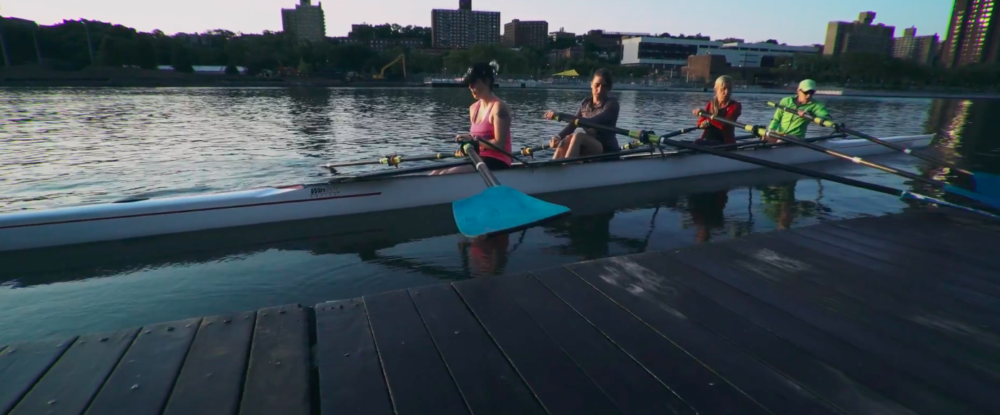
“I wanted a secure life for myself,” she says. “I had a real sense that if I was going to get there, I would have to make it happen. And now my larger mission is to be an example of a disabled person who’s very successfully employed.” In 2017, she joined Dow Jones, where she leads a team in developing products that range from data news and analytics to knowledge and insights for business.
Envisioning a More Accessible Future
After Rio, Walsh took up rowing. In less than a year, she has raced six times and earned an invitation to both Head of the Charles and the National Team Selection Camp, two big deals in the sport. To make both her rowing and her career work, she wakes up at 3:45 a.m., walks her dog, and takes the subway to Row New York’s boathouse in north Harlem. At 6 a.m., the boats launch. They row until 7:45, then she hits the shower. “I have about 15 minutes to change from an athlete to an executive presence,” she says. Then she joins the throngs of New Yorkers making their way to work “on a pretty level playing field.”
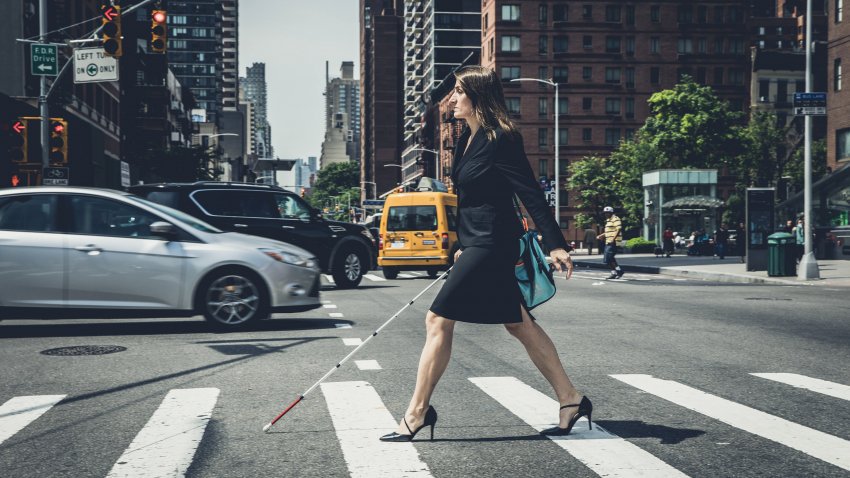
Once at Dow Jones, she summons her alarm clock skills. She’s careful not to let her eyes wander. She employs hypervigilance of her surroundings to fulfill the task at hand. And then she turns her attention to her more important goal: showing the disabled, through example, that the differences between what a blind person and a sighted person can do is merely a matter of perception.


